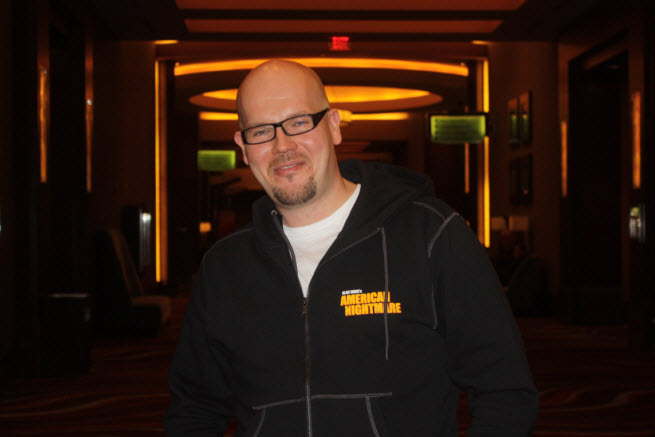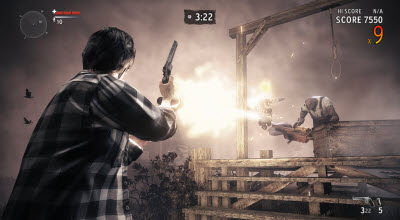Remedy Entertainment had a big week this week with the debut of Alan Wake’s American Nightmare, a new adventure in the Alan Wake series available on Xbox Live Arcade. The downloadable game started out as an arcade action game and it evolved into a full-fledged story-based episode where the hero Alan Wake, a bestselling horror novelist, has to grapple with a nightmare that is born from Wake’s own pulp fiction.
While the first Alan Wake didn’t live up to its original hype and was panned by critics, Remedy stayed with the property and found a way to publish the new game without a huge amount of risk. Matias Myllyrinne is chief executive of Remedy Entertainment in Helsinki, Finland. He and other developers at Remedy believed that they had an opportunity to take Alan Wake in a new direction, improve the game play to appease critics, and test the idea of releasing a big game via digital distribution. We sat down with Myllyrinne at the recent DICE Summit in Las Vegas. Here’s our edited transcript of the interview.
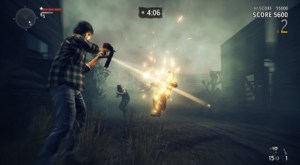 GamesBeat: Tell us about what Remedy is up to in Helsinki. Is the team working on multiple projects?
GamesBeat: Tell us about what Remedy is up to in Helsinki. Is the team working on multiple projects?
Matias Myllyrinne: So right now there’s a lot of interesting stuff that we’re doing in the digital space. We’re shipping Alan Wake (the original game) on PC (via digital distribution) on Steam. And then American Nightmare. So from a company that usually ships something every five years, this is big because we’re now having two launches in two weeks. That’s exciting.
We’re continuing to support Death Rally and update that, on iOS, with our external partners at Mountain Sheep. We have our large projects. We have a large project in the works as well. (It has not been revealed) We are launching Death Rally on Android as well. We’ve been changing the dynamics there to support free-to-play better, and to ship that on Android. It’ll be fun. We learned a ton about the iOS market with Death Rally, how the gamers play. A lot of the backend statistics are interesting. How many minutes do they play for, what kind of things do they do? That kind of stuff. I think it’ll be interesting to have data. So yeah, tons of stuff. We’re working with some external partners in Finland, but our main focus has been that whatever goes out with the Remedy brand is important. People need to know that it stands for something.
GB: And how was the experience of getting Alan Wake’s American Nightmare out?
MM: We’ve talked about the backstory, how it came to be. We got a lot of fan feedback from Alan Wake one. People loved the story, they loved the fiction, they loved the pacing. But one of the things we started getting comments on was that the action was repetitive. We started whiteboxing these different kinds of environments, adding wilder and wilder weapons, and wilder enemies. Not being constrained by the fiction at all, but just letting the game designers knock themselves out.
GB: By the way, on that front, fans criticized your game for repetition. But when you look at games like Halo, there is a huge amount of it. It’s funny how sometimes it matters.
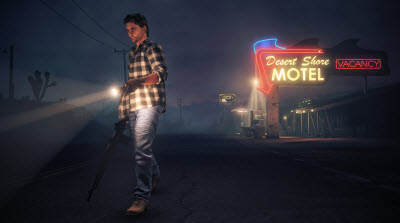 MM: I know. I mean, personally, I think I’d rather see us try to focus on what’s the essence of the game, and then try to do those one or two things really well. And hopefully one of them is something that nobody else is doing. And then it adds something to gaming culture, as opposed to trying to add a lot of version two features into a game.
MM: I know. I mean, personally, I think I’d rather see us try to focus on what’s the essence of the game, and then try to do those one or two things really well. And hopefully one of them is something that nobody else is doing. And then it adds something to gaming culture, as opposed to trying to add a lot of version two features into a game.
Not to pick on anybody in particular, but if you look at multiplayer as a kind of requirement for some games out there, they don’t really match up to Call of Duty or Battlefield, and it’s a me-too multiplayer. Nobody’s really playing those. I think if they focused on what was unique in their game, it would be much nicer for the gamer. I think we are on the side of focus, as opposed to bringing too much to the table.
American Nightmare was a fun project. It started in a very different way from other Remedy games. Usually we start with a story first and foremost, but this time around, we made these arcade maps. We were just battling against each other. We’d go down for a cup of coffee and then show who was on the leaderboard. Oz has dropped me from slot number two to slot number three. And then you’re saying, “Okay, I need to play some more.” So we just felt that it was a good game right there.
Sam Lake, our creative director, is very much driven by storytelling. There’s a larger fiction that’s been mapped out for Alan Wake. We then picked and chose elements of that fiction that would fit into an Xbox Live Arcade (XBLA) environment. It’s like [British chef] Gordon Ramsay comes over to your place and gives you a burger. It’s still Gordon fucking Ramsay cooking you a hamburger. You give him fifteen bucks for a great burger. But if you go to his restaurant, you pay him sixty bucks for a three-course meal. Then you expect something different. And I think that’s essentially what, internally, was our guideline. It still needs to hold to the Remedy quality. But on the other hand, you need to respect the medium as well. You don’t try to cram a three-course meal into something that’s not built for that. We’ll see what happens. Really, it’s exciting times.
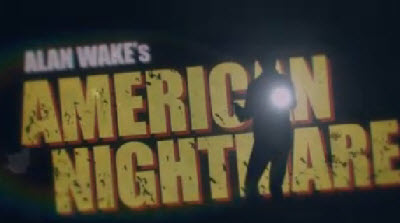 GB: You have to put some story in because of who you guys are, but you also have to make the experience short enough so that it fits with Xbox Live?
GB: You have to put some story in because of who you guys are, but you also have to make the experience short enough so that it fits with Xbox Live?
MM: Yeah. And it needs to be pick-up-and-play. It needs to be fun immediately. If you think of Wake as a franchise, there are two sides to it. One is the story and the characters, one is the action. This time around we emphasize the action much more than we did in the first one. And also the tone is different. We were more tongue-in-cheek with this one, not taking ourselves too seriously. In many ways I think it shows. It feels like a game from gamers to gamers. Having the pulp elements there lets us get away with a lot of…cliches or classics. [chuckles] Even the setting, classic Americana, Route 66, the motel, the drive-in movie theater, the observatory, all these… You can’t quite put your finger on it, but you know you’ve seen a film with something like this, or read a book like it. I think we take from that popular culture and make it into something of our own. And hopefully we give something back. I think that’s very much been our thing.
GB: Something like this has never really been done on Xbox Live Arcade. It seems like it could have been a stand-alone console game. Something bigger than DLC. How did you find a home for it?
MM: When we were doing Max Payne, we wanted to add the elements of slow motion. We had seen it in films, but never in games. We wanted to give that to the players. Push that envelope in action. With Wake, we thought that storytelling was something that could be taken further, especially in terms of pacing and building it like a series — a whole season of TV episodes. For us, it’s not enough that we do something good. I think it also has to be something new, or something that delights the player. There’s a surprise. I think with American Nightmare we’re hoping to challenge some of the conventions of XBLA. There are great XBLA games out there, and I don’t think there’s anything to take away from them. I love my Limbo, Super Meat Boy, those are terrific games. But I think there was an opportunity to push the envelope a little bit, and we wanted to do that. Luckily we’re in a position where we built a lot of it and then gave a call to Seattle (Microsoft). “By the way, would you like to see a Wake game on XBLA? Oz can be there in a week with a build. Why don’t you take a look at it?” [laughs] We knew that they’d be delighted. I think they were surprised and happy about that. It’s something that we very much wanted to do. I think the same goes for finally being able to take Wake to the PC as well. I think you need to have a sense of purpose in what you do. Making games is not always easy. It’s downright hard. But I think you need to have a reason to do it.
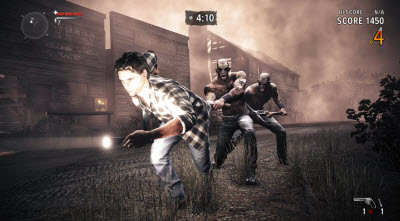 GB: It seems like how you release a game matters, too. You guys released on the same day as Red Dead Redemption. That was a tough choice when the original Alan Wake debuted.
GB: It seems like how you release a game matters, too. You guys released on the same day as Red Dead Redemption. That was a tough choice when the original Alan Wake debuted.
MM: Rockstar Games (makers of the smash hit Red Dead Redemption) is really wonderful at what they do. I think they have an insane attention to detail, and I think those guys are brilliant. If you looked at Red Dead Redemption, you couldn’t go to any major city, certainly in North America or western Europe, where they didn’t own the real estate (for billboard advertising) with it. Their point-of-sale is the standard in the industry. When you talk to developers, it’s like… “What do you need to do to get the Red Dead Redemption treatment?” They’re certainly wonderful at doing stuff like that. At least for me as a gamer, one’s a western and one’s a thriller. To me they’re orange juice and beer. They serve a different audience.
GB: And the original Alan Wake sold more than a million units, right? So even if people at the time thought it wasn’t a good launch, in the end it did sell over time.
MM: I think it was a respectable amount for a single-platform release. And we were second in that launch window. We placed second against good games like Prince of Persia and Blur.
GB: Wedbush Morgan analyst Michael Pachter was saying that maybe the standard for developers to shoot for is now like three million units sold. Is that true?
MM: That’s true. The bar is very high. But I think you also need to look at how impactful was your game. Obviously sales matter. They matter in that you’re able to continue to do things that you want to do. But I don’t think that’s the only measure. I think it’s one of the most important ones, but quality is also a measure.
GB: I mean, you can think of it as a success, but you can also think of it as something to learn from, I guess? It seems like that’s the approach you took here.
MM: We certainly learned technically and creatively a lot. I think we’re more of a cohesive and strong unit than we ever were before. We’ve always been fairly small. Max Payne one, we did it with 22 guys. Max Payne 2 was about 25 guys. With Alan Wake, we peaked at 55 with freelancers and contractors. We’re growing, but I think we’ve always wanted to keep it small.
MM: I think we’re about at 60 employees. But I think we have seven open positions. For us that’s large. And we’ll continue to grow. I don’t want to build a game factory. If you have something that needs to ship every two years, or every year God forbid, an annual installment, then you’re going to need to go big first. And it’s very hard to innovate in that kind of atmosphere. But I think now with the digital channels, we can do smaller installments. We can do larger things. It’s a lot of fun. There are different kinds of experiences that you can get into. Kind of like a season special or a full-featured episode of a series.
GB: I’ve wondered if we’re in an interesting in-between period, too, where you’re just beginning to be the first ones to release major things on Xbox Live Arcade. At some point, digital is the whole future. Are you looking more towards that future?
 MM: Yeah. I think that this is a good spot for those who are quick and aggressive, to make their mark. We certainly want to be there. You look at [hockey great] Wayne Gretzky. He says he is always skating toward where the puck is going to be. Not where the puck is now. I’d rather be that guy. If anything, it’s better to err on the side of going forward too much. It’s a good time for indie developers. You look at what’s happened, even in our neck of the woods in Finland. A lot of the developers are very successful because of the digital ecosystems, reaching a tipping point. Obviously Angry Birds, but also the guys at RedLynx who did Trials, and loads of others. I think those things are possible because of the ecosystems. No longer do you have to battle your way to Wal-Mart through a publisher. And they’re run as services. That’s what Death Rally is. Ten updates, adding multiplayer and stuff like that, I think it’s very much a service there. Less of a product.
MM: Yeah. I think that this is a good spot for those who are quick and aggressive, to make their mark. We certainly want to be there. You look at [hockey great] Wayne Gretzky. He says he is always skating toward where the puck is going to be. Not where the puck is now. I’d rather be that guy. If anything, it’s better to err on the side of going forward too much. It’s a good time for indie developers. You look at what’s happened, even in our neck of the woods in Finland. A lot of the developers are very successful because of the digital ecosystems, reaching a tipping point. Obviously Angry Birds, but also the guys at RedLynx who did Trials, and loads of others. I think those things are possible because of the ecosystems. No longer do you have to battle your way to Wal-Mart through a publisher. And they’re run as services. That’s what Death Rally is. Ten updates, adding multiplayer and stuff like that, I think it’s very much a service there. Less of a product.
GB: I guess you could think about consoles and something huge, like Alan Wake 2, or you could go down this other path of smaller titles on Xbox Live. You guys have these options.
MM: I think there are more options to reach people, and there are more options for how you package or price games. Are you selling per episode, are you selling a season pass? How do you build it? It’s certainly something that we’re looking at, and I know a lot of other people are trying to get their heads around it as well. There’s a lot to be said for giving people a disc for 60 bucks, but on the other hand, there’s a lot of people who will put their toe in the pool and try the water in digital distribution.
GB: Things like Runic Games’ selling Torchlight for $20.
MM: Yeah.
GB: With Arcade, can you still get enough feedback? As if you’re putting something out on iOS? Or is it still kind of filtered in some ways through the platform owner?
MM: There are certain basic things that we like to do. Obviously you can track how people are completing the game. We had really, really good completion on Wake. And I think a lot of that obviously came from the fact that we paced it like a TV series. It was easier to do bite-sized moments of gaming and then come back to it. Or you could binge. But at least you knew that this episode would end. So anyway, you can do a lot of things with achievements and see what they’re completing and what they’re not completing. It’s a whole art of its own, where you can track how people are doing that. And Microsoft’s really good with their testing. Not only on stuff like bug-tracking and stuff like that, they’re really good at seeing how people play your games, what their reactions are. Their usability labs are awe-inspiring. You can tell their roots and heritage there. That’s one of the things they nail down really well. If you want 200 people to play your game over the weekend and you want a report on Monday, they can do that. Which is impressive. That infrastructure.
GB: That kind of feedback, then, is it enough, or do you hunger for even more feedback than you could get…? Like the way Zynga gets feedback…
MM: I think that’s the wave of the future. How much and how quickly we get there, we’ll see. But I think anybody who’s seen a presentation from Zynga understands the power of what they have in their hands. That power can be used for good or it can be used for evil. [big laughs] I’d like to think that we err on the side of the benign.
GB: So there’s certain forces in the industry that you’re accepting, and also some that you’re fighting against, I guess?
MM: Yeah. I think as long as you’re… I don’t know. I like to think that if you entertain people and make something sticky and impactful, then eventually you’ll be financially and commercially successful as well. I think it’s important to start from the entertainment side, or the creative side, and then figure out what the right business model or the right pricing or the right channel is for that. Rather than starting with the channel and the business model first. But it works for a lot of people, so I’m not knocking it. A lot of good, smart people are doing it the other way around. That’s fine. But I think for us it just comes more intrinsically where you start from a creative place. We’re not altruistic, we’re out to be financially successful, and luckily we’ve been that. We’ve been there, and we hope to stay in that spot.
VentureBeat's mission is to be a digital town square for technical decision-makers to gain knowledge about transformative enterprise technology and transact. Learn More
